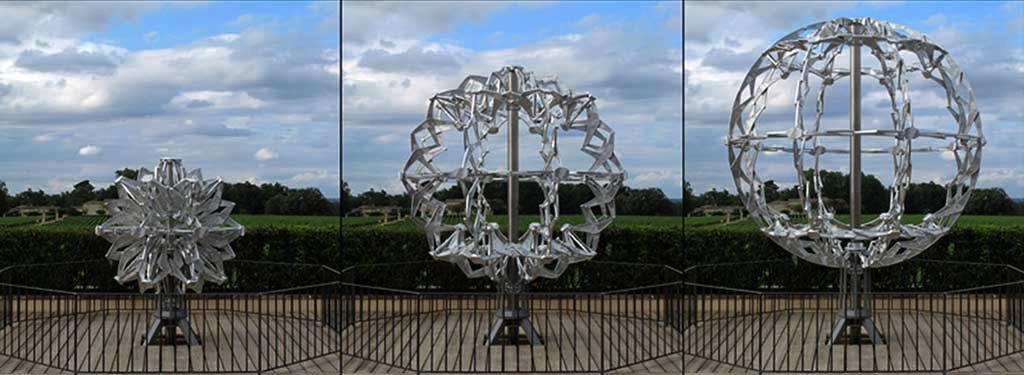Even if you don’t know what it’s called, you’ve probably seen or interacted with a Hoberman sphere before. Folded up, they look like stars, all angles and ridges and points. Pull on any pair of points, though, and the star blooms into a sphere with nearly double its original diameter. In miniature form, they appear in nurseries and playrooms, toys for children to collapse and expand over and over. They watch the mechanisms at work, wonder at the moving parts, and wander off into space, guided by their imagination.
Lincoln Motor Company featured several Hoberman spheres in its lounge at the LA Auto Show last year, and Lincoln Now recently interviewed Chuck Hoberman, the inventor of the eponymous devices. Hoberman is an artist-turned-engineer, or an engineer-turned-artist. As we’ve said, we don’t really distinguish the two, and he doesn’t either. “Basically, my career and my creative life are about the intersection between art and engineering, design and science,” says Hoberman.
Asked about his inspiration, he says that the design for his best known creation came about through a process of discovery and transformation. “I wanted to know if I could use the principles of mechanisms to make forms that transform themselves,” says Hoberman. “In other words, the whole function of the mechanism is to transform itself, by itself.”
Hoberman’s spheres resonate on many levels, permeating multiple spheres of influence – no pun intended. For Lincoln, their influence is a philosophical one. Hoberman spheres do not function without total harmony of motion. Each joint depends on all of the others to operate correctly. There’s a synchronicity of moving parts that must work together to succeed. So it is with a Lincoln automobile, both the cars themselves and the teams of people who combine and collaborate in order to give them form.
Take a few minutes to read the full interview on the Lincoln Now blog, then leave your thoughts below or email them to us at comments@leithmail.com. Leith Lincoln is ever mindful of your considerations.




